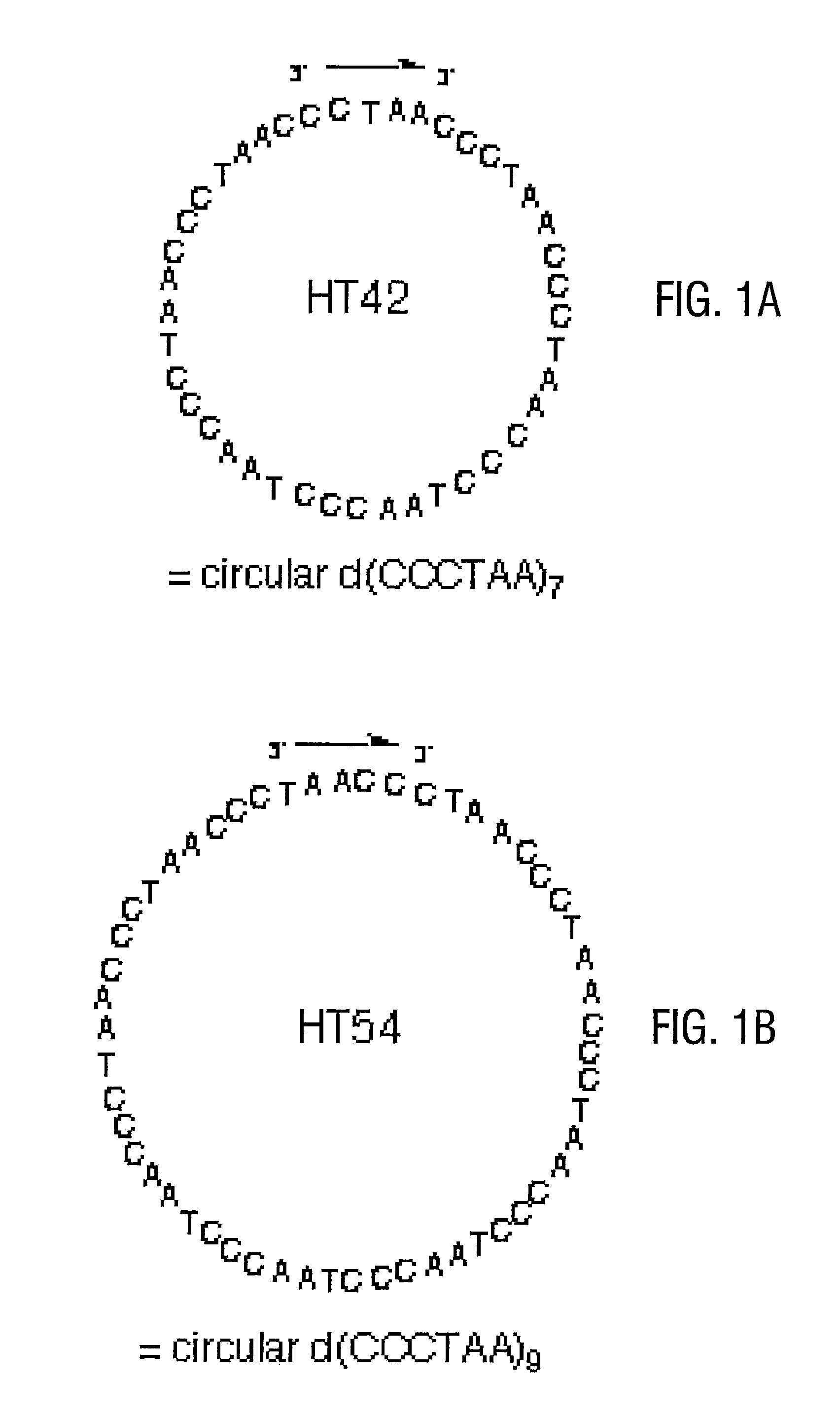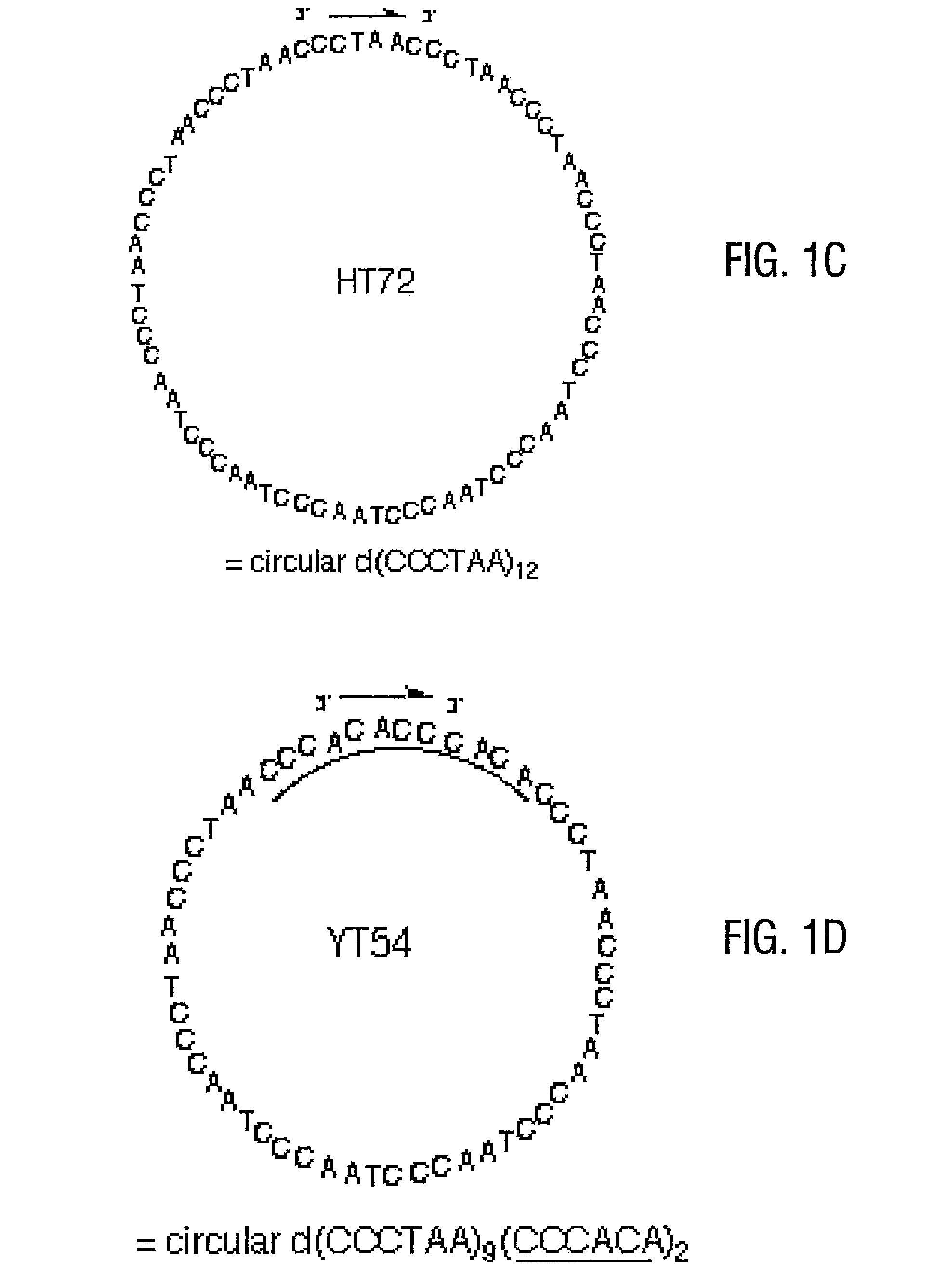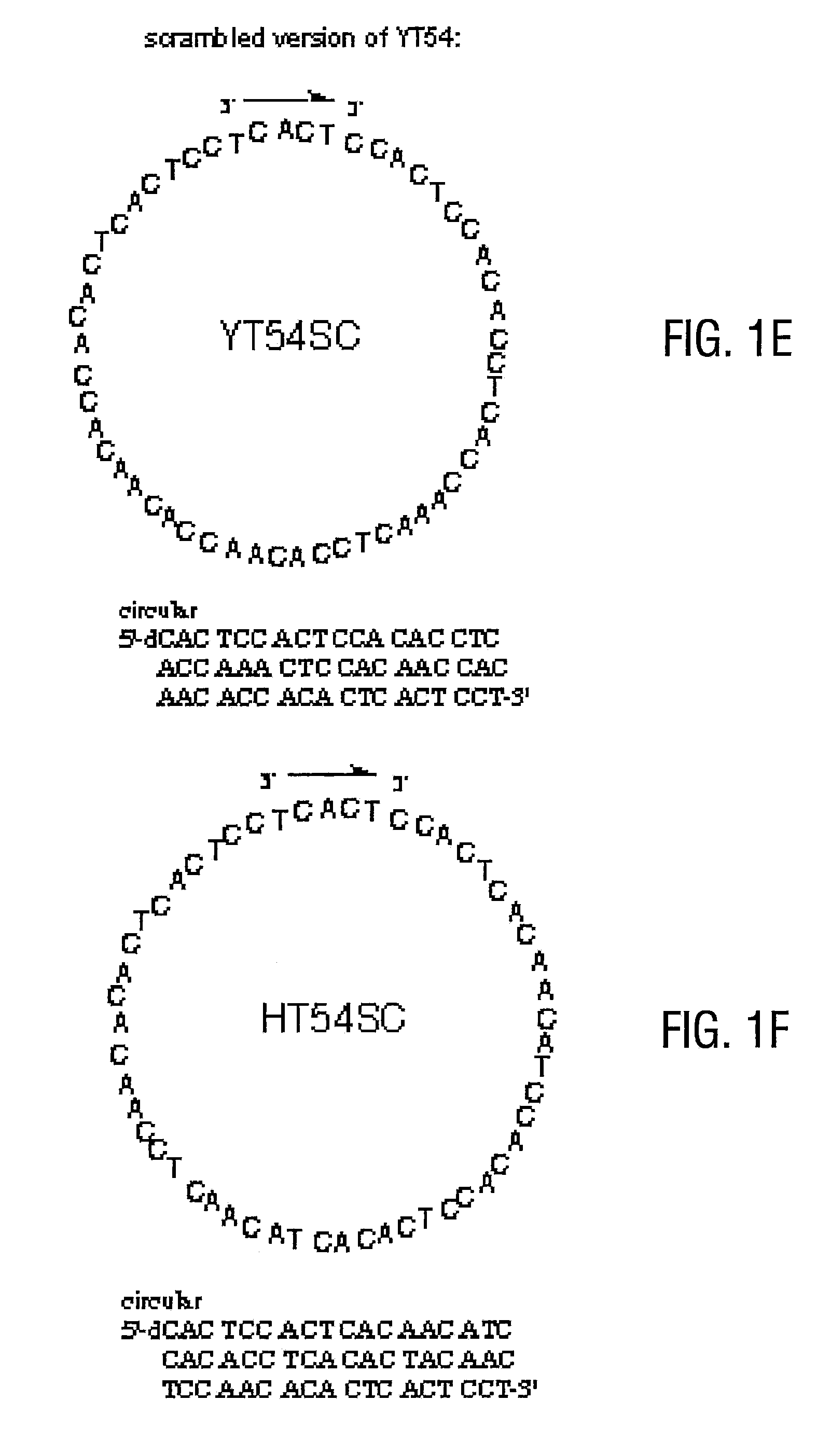Telomere-encoding synthetic DNA nanocircles, and their use for the elongation of telomere repeats
a synthetic dna and telomere repeat technology, applied in the field of extension of telomere repeat sequences, can solve the problems that the synthetic methods previously reported are not effective at producing such nanocircles, and achieve the effects of reducing liver function and activity, high speed, and high efficiency
- Summary
- Abstract
- Description
- Claims
- Application Information
AI Technical Summary
Benefits of technology
Problems solved by technology
Method used
Image
Examples
example 1
Preparation of a DNA Nanocircle Encoding Chimeric Telomeric Repeats
[0069]The synthesis of DNA nanocircle templates encoding imperfect telomere repeats (i.e., chimeric or mutated repeats) is relatively straightforward (see FIG. 3A). A “splint” of nucleic acid, ca. 12-53 nucleotides long, (or a nucleic acid analog known to hybridize to DNA sequences) is designed to be perfectly complementary to the opposite ends so that on binding the linear circle precursor, the 5′ and 3′ ends of the circle precursor are brought into immediately adjacent positions in a double helix. The precursor DNA contains a 5′ phosphate for enzymatic ligation (or a 3′ or 5′ phosphate for chemical ligation). For closure into circular form, an enzyme such as T4 DNA ligase or Tth DNA ligase is added along with ATP in a buffer sufficient to allow ligation. Alternatively, chemical ligation with agents such as cyanogen bromide, N-cyanoimidazole, EDC, and water soluble carbodiimides can be performed. Note that modified ...
example 2
Preparation of the YT54 DNA Nanocircle
[0070]The linear precursor had the sequence 5′-pdCCC ACA CCC TAA CCC TAA CCC TAA CCC TAA CCC TAA CCC TAA CCC TAA CCC ACA-3′ (SEQ ID NO:18), and the splint had the sequence 5′-dAGG GTG TGG GTG TGG GTT AG-3′ (SEQ ID NO:19). The ligation reaction was carried out in 50 mM Tris-buffer (pH 7.5) that contained 1 μM linear precircle, 1.2 μM template strand, 10 mM MgCl2, 5 μM ATP, 10 mM DTT, and 0.34 units / μL T4 DNA Ligase. The reaction was incubated at room temperature for 18 hours. The mixture was then dialyzed against distilled water and lyophilized. Preparative purification of circular product (see FIG. 3A) was carried out using denaturing 20% polyacrylamide gels.
example 3
Preparation of DNA Nanocircle Encoding Perfect Homogeneous Repeats
[0071]The preparation of nanocircles encoding perfect homogeneous repeats all the way around the sequence is considerably more difficult, and required new methods to solve the problem. The reason for the difficulty is that a splint DNA molecule will preferentially bind the middle of the circle precursor rather than the two ends. Thus cyclization by ligase enzymes or chemical methods is prevented.
[0072]An initial approach to solving this problem failed. The use of different protecting groups on the ends versus the middle of the precursor was envisioned. First, the end protecting groups would be removed, allowing the splint to bind only at the ends by preventing effective binding at the middle. At the ends of the DNA, rapid deprotection chemistry such as PAC protecting groups (rapid-deprotecting phosphoramidites were purchased from Glen Research) were used. Benzoyl protecting groups on the adenines in the HT54 nanocircl...
PUM
| Property | Measurement | Unit |
|---|---|---|
| temperature | aaaaa | aaaaa |
| volume | aaaaa | aaaaa |
| pH | aaaaa | aaaaa |
Abstract
Description
Claims
Application Information
 Login to View More
Login to View More - R&D
- Intellectual Property
- Life Sciences
- Materials
- Tech Scout
- Unparalleled Data Quality
- Higher Quality Content
- 60% Fewer Hallucinations
Browse by: Latest US Patents, China's latest patents, Technical Efficacy Thesaurus, Application Domain, Technology Topic, Popular Technical Reports.
© 2025 PatSnap. All rights reserved.Legal|Privacy policy|Modern Slavery Act Transparency Statement|Sitemap|About US| Contact US: help@patsnap.com



